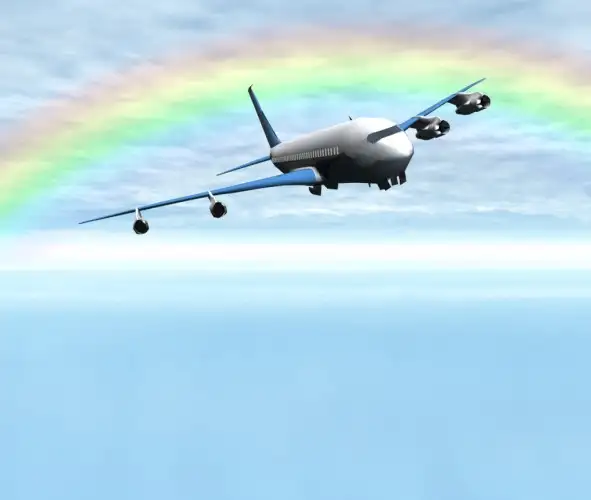
On January 1, 1914, the first commercial flight in history took one paying passenger across Tampa Bay, from St. Petersburg to Tampa, in a two-seat seaplane. Several industry leaders took note of the coincident 100th anniversary of flight and this New Year’s Day to speculate about the next 100 years of flight, along with the next five and the next 25. Sadly, most of their prognostications were pedestrian and obvious, with only three even slightly adventurous or thought-provoking.
- Sir Richard Branson of the various Virgin enterprises speculated that, within the 25-year time frame, travelers could reach Sydney from London on two-hour suborbital flights.
- Mark Dunkerley, CEO of Hawaiian Airlines, worried that many of today’s travelers will be priced out of the air, due to failure to invest in infrastructure and the “insatiable appetite for regulation.”
- Ben Baldanza, CEO of Spirit Airlines, speculated—probably tongue in cheek—that Google’s “put me there” technology would make travel obsolete.
Clearly, some of those remarks were self-serving or self-promoting. Sir Richard forgot to mention that only the very rich would be able to afford those suborbital flights, or that his own Virgin Galactic is today’s leading candidate to provide future commercial space travel. Dunkerley was right about infrastructure, but way off on regulation: Virtually all recent calls for regulation have been in response to consumer abuse. And try to sell even a great audio-visual display over a trip to Florida to anybody who went through last week’s big storms in the Midwest and Northeast.
Doug Parker, of the newly merged American Airlines, got it right when he said, “I cannot imagine what commercial aviation will look like in 2114.” And, overall, that’s as true today as it was in 1914, when nobody could have foreseen the A380 or the Concorde. Still, trying to guess the future is in human DNA, and talking about 100 years in the future is perfectly safe for us, given that neither we prognosticators nor our readers will be around to check on the accuracy. And we do know a few things, especially about the 25-year time frame.
For Now, Not Much Change: Given the lead time for design and manufacture, we know that for most of the next 25 years, we’ll be flying in the recently updated versions of the same 737s, 777s, 787s, A320s, A350s, A380s, E170s, and C-Series that we fly in today or at least next year. The latest versions of these models are, or will be, up to 15 percent more fuel efficient than today’s current models, an evolution that will help keep fares in check. But you’ll have to wait until late in the 25-year period for something really new.
Cheaper and Bigger: When Airbus, Boeing, Bombardier, Embraer, or maybe the Chinese or Russians finally start to replace the latest current models, you can expect some radically different airplanes. For at least a decade, aeronautical engineers have known that a “blended wing” design, rather than today’s cylinder-with-wings design, could produce substantial improvements in efficiency. Somebody will go there.
Faster: Aeronautical engineers already know how to minimize the sonic boom that accompanies supersonic flight, so you may well see a return to Concorde speeds with planes that can operate over land as well as over oceans. The first will probably be a supersonic business jet, because costs don’t matter that much to the very rich. But a premium-market transport is also likely.
Energy’s the Key: In many ways, the most fundamental instrument of change in the next 100 years will be when—which I prefer to if—we manage to figure out how to make fusion energy work. If so, although generating stations will be hugely expensive, fusion fuel is virtually free. Limitless electricity, without pollution, will permit ground vehicles, whether rail, maglev, pneumatic tunnel, or something entirely new, to reach speeds close to today’s airline speeds.
If you’re interested in more of the industry leaders’ views, you can check out the AP story here.
Ed Perkins on Travel is copyright (c) 2014 Tribune Media Services, Inc.
You Might Also Like:
We hand-pick everything we recommend and select items through testing and reviews. Some products are sent to us free of charge with no incentive to offer a favorable review. We offer our unbiased opinions and do not accept compensation to review products. All items are in stock and prices are accurate at the time of publication. If you buy something through our links, we may earn a commission.
Related
Top Fares From
Today's Top Travel Deals
Brought to you by ShermansTravel
Kenya: 14-Night Tour, Incl. Tanzania &...
smarTours
 vacation
$7125+
vacation
$7125+
7-Night Caribbean Round-Trip Cruise From Orlando:...
Norwegian Cruise Line
 cruise
$739+
cruise
$739+
Ohio: Daily Car Rentals from Cincinnati
85OFF.com
 Car Rental
$19+
Car Rental
$19+



